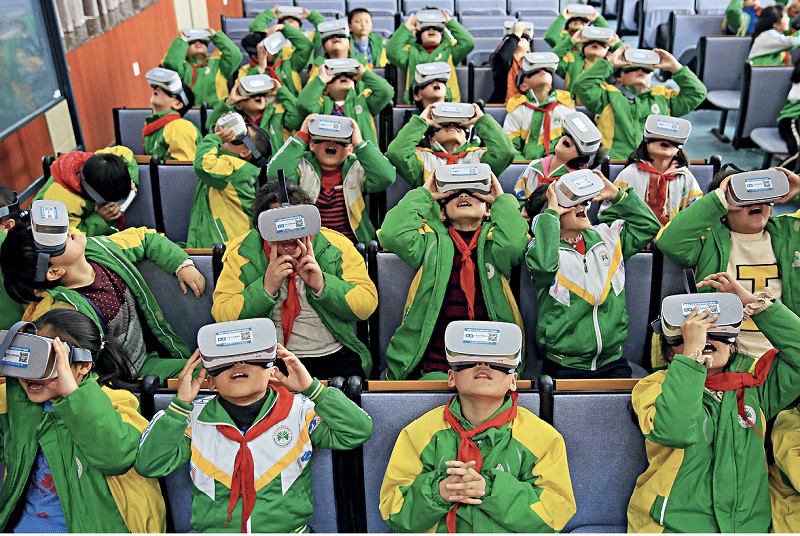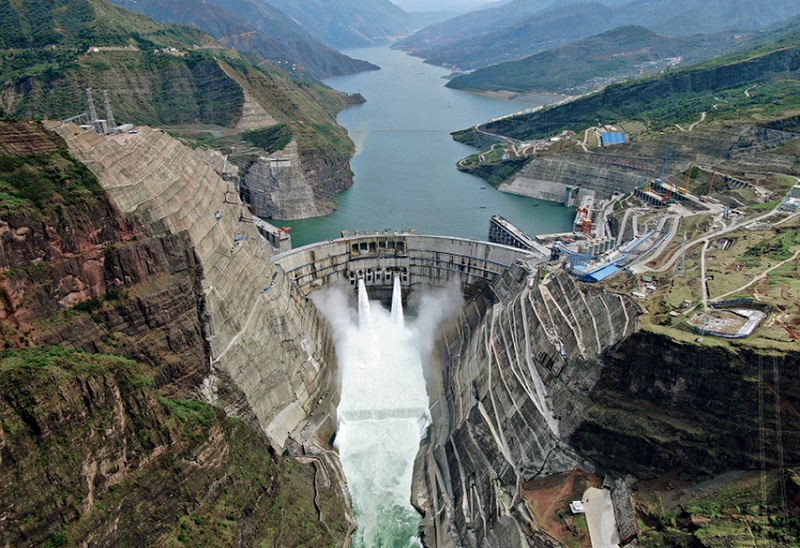China has become a truly geo-economic meridian of the globe, reverberating in practically every field. And the 20th CPC National Congress showed an accordingly self-confident spirit ahead.
With the continued leadership of General Secretary Xi Jinping and the clear definition for the first time of the term “Chinese modernization” in his report, which maps out the path for the nation to realize rejuvenation, the 20th National Congress of the Communist Party of China (CPC) concluded with a positive message of openness to the world.
“We must keep to our path and not sway in our commitment. We must not return to the isolation and rigidity of the past, or veer off course by changing our nature or abandoning our system,” Xi said during the congress. It was the recognition of the successful path adopted by a country coming from the margins of power and influence several decades ago to the global forefront in the last decade, that reflected the perseverance and self-confidence of the Party in leading the country to achieve modernization and great rejuvenation of the Chinese nation.

Primary school students experience high technology first-hand in a VR classroom at Xiangxi Tujia and Miao Autonomous Prefecture, Hunan Province, on March 14, 2018.
Achievements and Rejuvenation
The documents and decisions adopted by the 20th CPC National Congress are being widely and heatedly discussed worldwide. Countries are weighing their way to better interact with the world’s second largest economy.
Its incredible development achievements during the past decade have vaulted the country to a very important position in the international arena. It is no wonder that Xi’s report to the CPC national congress referred to the importance of the “rejuvenation of the Chinese nation,” which he first underscored in November 2012, shortly after he became the top leader of the CPC.
Back then, he elaborated on the great rejuvenation of the Chinese nation as a Chinese dream. In 2014, a report from the International Monetary Fund indicated that China was the world’s biggest economy measured at purchasing power parity (PPP). It was the first time since 1872 that the United States had been knocked off the top spot by another nation. According to the World Bank in 2021, the U.S. GDP with PPP considered was US $23 trillion and China’s US $27.3 trillion.
Noteworthily, it was the first time that “Chinese modernization,” a core term defining the country’s journey to rejuvenation, was included in a report to a CPC national congress. Chen Shuguang, a professor at the Party School of the CPC Central Committee, said the CPC leadership reiterated the point that China’s modernization “will not be a replica of the Western one since the Chinese path works well.”
The congress underscored the achievement of China becoming the major trading partner of over 140 countries and regions, leading the globe in the total volume of trade in goods. It accounts for 18.5 percent of the world economy, up 7.2 percentage points over the past decade.
In other words, a country that was primarily an agricultural nation about 70 years ago today boasts of having the world’s most extensive education and social welfare systems, the largest high-speed railway network and cutting-edge technologies in many sectors, thanks to its innovative development concepts and forward-looking and viable long-term plans.
Win-Win, Not Zero-Sum
The Washington Post, echoing U.S. President Joe Biden’s national security strategy released in mid-October, called China “the only [U.S.] competitor with both the intent to reshape the international order and, increasingly, the economic, diplomatic, military, and technological power to do it.” Western analysts forget that in the coming two, three or four years, China is bound to have an even greater international influence due to its multidimensional development and progress-oriented economy. As a result, even by conservative estimates, by 2027 or 2030, China will overtake the United States as the largest economy. The trend is almost unstoppable, whether by the economic trajectory or microhistory-frame analysis.
It is true that Biden’s new national security strategy document holds out the prospect that China and the United States can “work together, for the good of our people and for the good of the world” on issues such as the climate or pandemics. However, top U.S. officials have been behaving recklessly lately, playing with fire on the Taiwan question, thus casting doubt on Biden’s intention.

An aerial photo shows the construction site of the Baihetan Dam, the world’s largest giant hydropower station, in Sichuan Province’s Liangshan Yi Autonomous Prefecture on June 27, 2021.
Self-Reliance in Key Technology
Washington’s confrontational stance does not stop there. In early October, it announced sweeping export controls, cutting people and firms in China off from many advanced technologies of American origin, and from products that rely on them. Unsurprisingly, Xi called for self-reliance and resolutely winning the battle for core technologies in key fields during the congress.
The situation recalls the development of China’s first domestically designed general-purpose computer, the Model 107, led by Chinese engineer Xia Peisu. It was based on China’s own scientific capacity when the country was isolated in the 1960s. That achievement made it possible for Beijing to send its first satellite into space in 1970, a landmark breakthrough.
China prefers multidimensional collaboration and competition rather than confrontation. However, if pushed hard, it can react accordingly. History can attest to that. Short-term, mid-term, and long-term cycles matter.
Former NATO Secretary General Javier Solana recently highlighted that in the past several years, more students had graduated in science subjects from China than from the United States and Europe combined. Such reality constitutes just one pillar of China’s most spectacular applied scientific goal – to reach the limits of the solar system. Last year Beijing sent an observation satellite towards the sun to collect data about the ultimate source of energy in our solar system. This is an additional dimension of the scale of what we are talking about when referring to China’s modernization and rejuvenation.
We should be aware that China has become a truly geo-economic meridian of the globe, reverberating in practically all fields, and the past decade confirms that reality. And the 20th CPC National Congress showed an accordingly self-confident spirit ahead. 
AUGUSTO SOTO is director of the Dialogue with China Project.